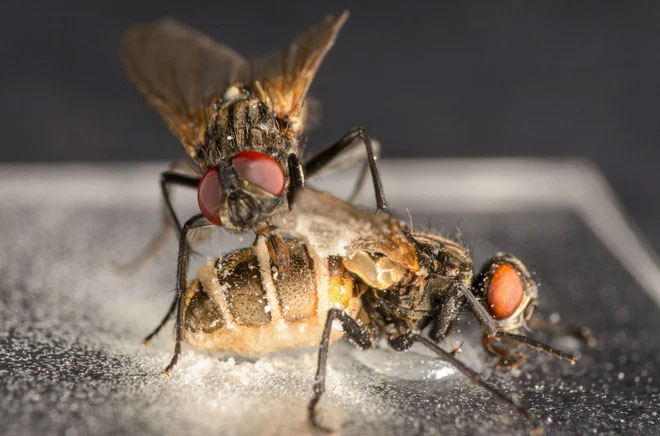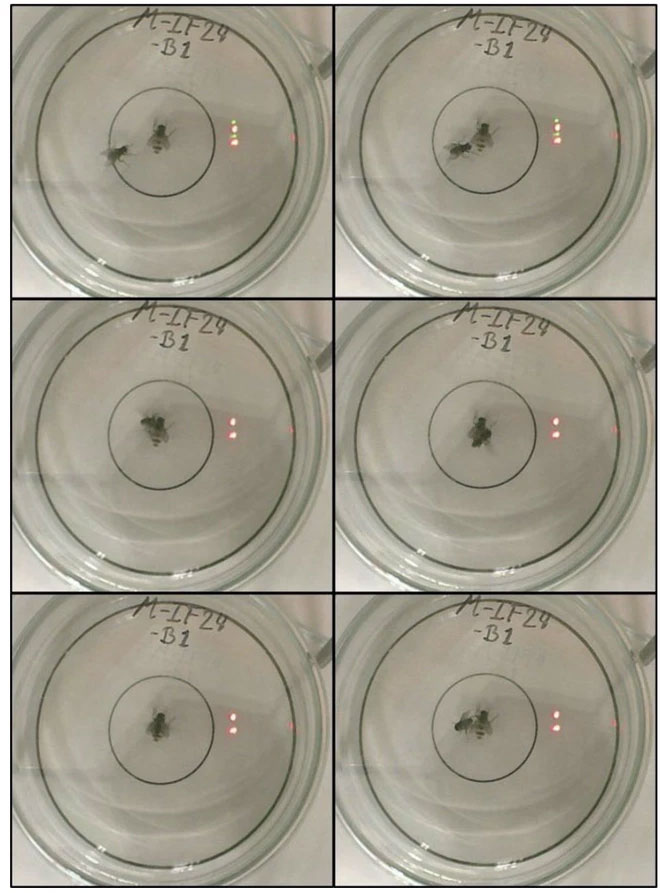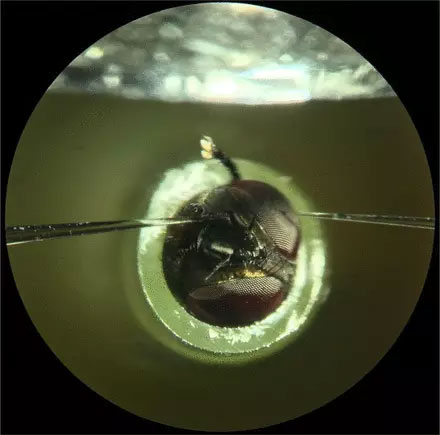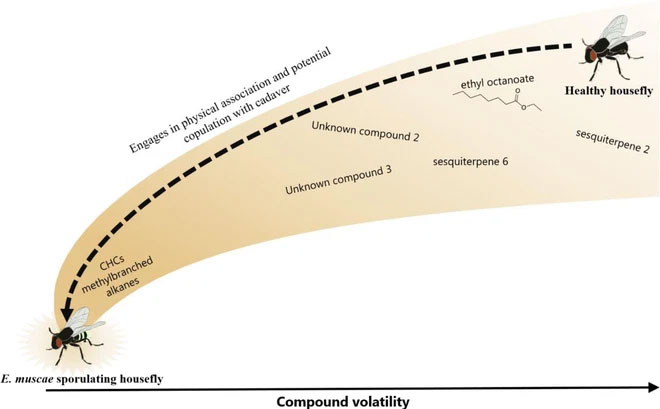If you see a dead fly on the windowsill, surrounded by tiny white spores, it’s a deadly trap. This insect has been invaded by a fungus that takes over its brain, controlling the fly to seek the highest place it can reach before dying.
From there, the fungus releases its spores into the air to infect as many healthy flies as possible. Even stranger: male flies attempt to mate with the deceased females, which have been swollen by the fungus.

This fungus releases chemicals that lure flies to increase their infection rates.
Now, a study has revealed that this fungus produces a “love potion” by releasing chemicals that attract flies, thereby increasing their infection rates.
Carolyn Elya, a molecular biologist and postdoctoral researcher at Harvard University, who studies fungi (but was not involved in the research), stated: “This new study shows another way that fungi move to new hosts. They have made a significant advancement.”
Before this new research, some scientists had observed male flies trying to mate with the corpses of females that had died from the Entomophthora muscae fungus. It appeared that this interaction could help the fungus spread, but it was unclear if the fungus was actively attracting the males.
Henrik de Fine Licht, an ecologist at the University of Copenhagen, and Andreas Naundrup Hansen, a PhD student, investigated whether the fungus was luring healthy males to the deceased females by making them feel the urge to mate.
First, Hansen infected female flies with the fungus, and immediately after they died, he placed each one into a petri dish. Each time, he added a healthy male to the dish and observed whether it approached the deceased female, how long it stayed nearby, and whether it attempted to mate. He also conducted control experiments with uninfected females that he had killed by freezing.

Andreas Naundrup Hansen’s experiment with male and female flies.
As a result, the males were five times more likely to attempt mating when the female had died from the fungus. Sometimes, the mating was so vigorous that it produced a cloud of spores, but even simple contact was enough to infect a healthy male.
In another experiment, healthy males were given a choice between two deceased females in the same petri dish, one infected and one uninfected. The males mated more frequently (compared to when no females were infected), but they did not distinguish between the two females. Hansen suspects the fungus emits some sort of mating signal. He said: “It’s almost like an aphrodisiac, which can elevate the sexual behavior of the males to an extraordinary level.”
Hansen then tested whether the males were actually attracted to the fungal spores. He placed four male flies in a small chamber containing two opaque petri dishes. Inside each petri dish were two pieces of fly trap paper, one coated with fungal spores and the other without. In 43 trials, all four flies landed on the paper with the fungal spores. The other trap paper only caught all four flies in 17 trials.
Matthew Kasson from West Virginia University, who specializes in insect-killing fungi, remarked: “This is really an amazing study.”
The research team suspects that the strong odor of the fungus – a grassy, slightly sweet smell – is part of the attraction. By placing an electrode on the antenna of a fly, Hansen demonstrated that the fungus stimulated a current in the brain. To identify the chemicals released by the fungus, he extracted compounds from the dead flies using solvents. Working with chemical ecologists at the Swedish University of Agricultural Sciences, the research team found that the infected flies contained more chemicals than healthy flies, with the presence and abundance of certain types changing over time as the flies became infected.

The research team suspects that the strong odor of the fungus is part of the attraction.
Some chemicals, known as branched-chain alkanes, have previously been recognized as stimulants for male house flies to mate.

The fungus’s attraction can be detected indoors or outdoors.
The researchers were unable to identify the specific chemical attractant of the fungus, but they noted that if it could be isolated and produced, it could be useful as a lure for trapping house flies. Meanwhile, the researchers expressed their astonishment at the manipulation capabilities of this fungus. “I am truly impressed and amazed at the extent of the manipulation it exhibits,” de Fine Licht said.
The fungus’s attraction can be detected indoors or outdoors. “If people are interested in this, my advice is to stop and — I wouldn’t say smell — but stop and observe the flies.”


















































